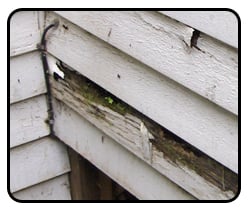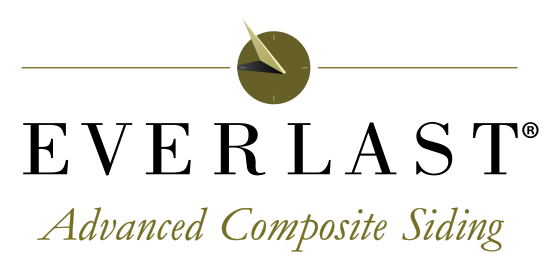There are many different types of exterior house siding to choose from when building or remodeling your home. However, in the best siding options beauty is more than “skin deep.” Durability, efficiency and lifespan are also important. Let’s take a look at a few of the most popular exterior house siding choices today.
Everlast Composite Siding
At the top of the list is Everlast Composite siding. It is one of the most remarkable house siding products available, because it has so many benefits and very few drawbacks.
most remarkable house siding products available, because it has so many benefits and very few drawbacks.
Everlast siding is durable:
- Over 500% thicker than vinyl siding.
- Withstands all climates and weather.
- Resists dents and chipping.
- Non-absorbent composite unaffected by warping, rot, mold or mildew.
- Low maintenance (usually a quick hose-down keeps it looking like new).
The Everlast siding system is efficient:
- Being so much thicker than vinyl Everlast can also be installed with a rigid insulation system to decreases energy loss and noise pollution.
- Environmentally sustainable product made of inorganic minerals and polymers.
- Energy efficiency can help lower utility bills.
Everlast siding is beautiful:
- Colored all the way through. Color-Hold technology and acrylic cap stock are fade resistant.
- Looks like natural wood and comes in a variety of colors.
Vinyl Siding
Vinyl exterior siding, which is essentially PVC plastic, is also popular. Benefits of vinyl include:- Inexpensive.
- Readily available.
- Lower maintenance than wood or fiber cement.
Vinyl does have some disadvantages. The thinness of the PVC plastic isn’t usually very efficient. Even insulated vinyl siding doesn’t always live up to the performance of other materials. Its lifespan is also generally shorter, as it’s prone to fading and denting by things like hail, rocks and branches.
Fiber-Cement Siding
Fiber-cement is an exterior siding that is particularly known for its durability. Advantages include:- Mix of cement, saw dust, and silica makes for a stronger material than vinyl, resisting denting and fire.
- Performs well in dry climates.
- Available in mutiple shapes and profiles.
Fiber Cement Disadvantages
Something to keep in mind about fiber-cement is it absorbs water and has a slow rate of evaporation. This means it can develop mold or mildew issues, and can crack in extremely frigid temperatures. It’s also not one of the most efficient options, doing little to reduce noise pollution or energy loss. While the painted surface resists denting, it is vulnerable to chipping and because it's a painted product, chips reveal the unattractive sub-surface.
Hardwood/Masonite Siding
Hardwood siding such as LP Smart Siding or Masonite is actually a blend of sawdust, wax and resin that's pressed to look like lumber. Benefits include:
blend of sawdust, wax and resin that's pressed to look like lumber. Benefits include:
Easy installation.
Inexpensive alternative to real lumber.
Disadvantanges:
- Hardboard siding has a poor track record for performance and is seldom used anymore in cold or moist climates.
- Any siding material containing any wood at all is vulnerable to warping, swelling, mold and fungus growth.
- Protective sealants only go so far, and pressed board products in moist climates are destined to fail.
- Prone to fading
Exterior house siding quality is about more than looks. Each kind has advantages and disadvantages, but Everlast Composite stands out as being one of the best siding investments available, offering exceptional performance and benefits for homeowners.
Author: Peter Martino





